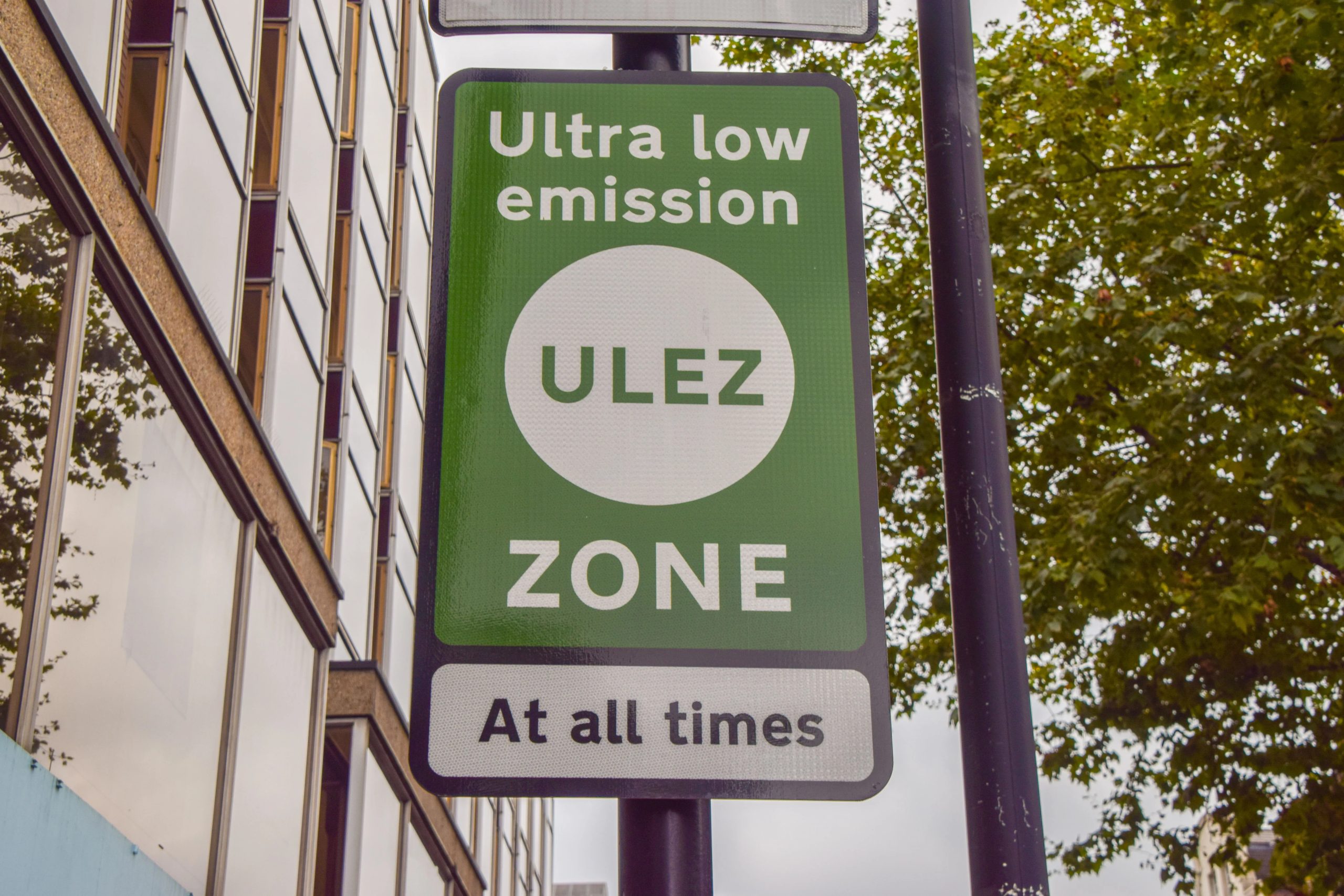 The Ultra Low Emission Zone (ULEZ) is an initiative implemented in London to combat air pollution and improve the city’s air quality. Launched in April 2019, it aims to reduce the levels of harmful emissions produced by vehicles within the city limits. The ULEZ is part of the larger plan to create a healthier and more sustainable environment for Londoners.
The Ultra Low Emission Zone (ULEZ) is an initiative implemented in London to combat air pollution and improve the city’s air quality. Launched in April 2019, it aims to reduce the levels of harmful emissions produced by vehicles within the city limits. The ULEZ is part of the larger plan to create a healthier and more sustainable environment for Londoners.
London has long faced the issue of poor air quality, with levels of nitrogen dioxide (NO2) and particulate matter (PM) exceeding legal limits. These pollutants have detrimental effects on human health, contributing to respiratory problems and increased risk of cardiovascular diseases. To address this pressing issue, the ULEZ was introduced.
The ULEZ operates within the same boundaries as the Congestion Charge Zone in central London. All vehicles that enter this zone are required to meet specific emission standards or pay a daily charge. The emission standards differ depending on the type of vehicle, with stricter requirements for older and more polluting vehicles. The aim is to encourage the use of cleaner, low-emission vehicles and discourage the use of high-polluting ones.
The creation of the ULEZ is driven by several objectives. Firstly, it aims to significantly reduce air pollution by targeting the most polluting vehicles. By doing so, it aims to improve the health and well-being of Londoners, particularly those living and working in the city center. Secondly, it seeks to incentivize the transition to cleaner modes of transport, such as electric vehicles, by making them more financially attractive compared to their polluting counterparts. Lastly, the ULEZ also aims to encourage car owners to use public transport, cycle, or walk instead, reducing overall traffic congestion and creating a more sustainable transport network.
The implementation of the ULEZ has not been without controversy. Some argue that it disproportionately affects low-income individuals who may own older, more polluting vehicles and cannot afford to upgrade to cleaner alternatives. Others worry that the ULEZ unfairly penalizes small businesses and may have negative economic implications. However, proponents of the ULEZ argue that the health benefits and long-term environmental gains outweigh these concerns.
In conclusion, the ULEZ is a significant step towards addressing London’s air pollution crisis. By implementing emission standards and charging higher-polluting vehicles, the initiative aims to improve air quality, promote sustainable transport, and protect the health of Londoners. While it may face some challenges, it is an essential measure towards creating a greener and healthier city.
London’s Ultra-Low Emission Zone (ULEZ) has been a game-changer in the city’s ongoing battle against air pollution. Introduced in April 2019, the ULEZ sets strict emission standards for vehicles entering the zone, encouraging cleaner and greener transportation options. Understanding the key features and requirements of the ULEZ is crucial for vehicle owners and commuters alike.
The ULEZ imposes emission standards based on vehicle type. For cars, motorcycles, and vans, they must meet Euro 4 standards, which were introduced in 2005. This means that vehicles registered before 2005 may not be eligible to enter the ULEZ without incurring charges. On the other hand, lorries and buses must adhere to Euro VI standards, which significantly reduce nitrogen oxide and particulate matter emissions.
The adoption of these stringent emission standards is aimed at reducing the harmful effects of air pollution on public health and the environment. Nitrogen oxide and particulate matter, commonly emitted by older vehicles, contribute to respiratory problems, cardiovascular diseases, and climate change. By targeting specific vehicle types, the ULEZ ensures a gradual shift towards cleaner and more sustainable modes of transportation.
To enforce these standards, the ULEZ employs a network of cameras that monitor vehicles entering and exiting the zone. These cameras use automatic number plate recognition technology to identify vehicles and check their compliance with the emission standards. If a vehicle fails to meet the required standards, a daily charge of £12.50 is imposed, in addition to any congestion charges already applicable.
The ULEZ operates 24 hours a day, seven days a week, and covers the same area as the Congestion Charge Zone in central London. This zone spans from the City of London to Kensington and Chelsea, and from Euston Road to Brixton. It is important for vehicle owners and commuters to be aware of these boundaries to avoid unnecessary charges and fines.
While the implementation of the ULEZ has faced criticism from some vehicle owners, its positive impact on air quality cannot be overlooked. The zone has already led to a significant decrease in nitrogen oxide levels, contributing to cleaner and healthier air for Londoners. Moreover, the ULEZ has prompted many vehicle owners to upgrade to cleaner and more fuel-efficient vehicles or switch to greener alternatives such as electric or hybrid models.
In conclusion, the ULEZ’s key features and requirements are centered around stringent emission standards for different vehicle types. By targeting older vehicles that contribute the most to air pollution, the ULEZ aims to improve air quality and protect public health. As the ULEZ continues to encourage the adoption of cleaner transportation options, London takes a step towards a greener and more sustainable future.
Explore the impact of the ULEZ on air quality and public health in London. Since its implementation, the Ultra Low Emission Zone (ULEZ) has brought about significant improvements in the city’s air quality. Studies and data have shown that the ULEZ has contributed to a decrease in harmful pollutants, such as nitrogen dioxide and particulate matter. This positive change has had a direct impact on the health of Londoners, particularly those residing in highly polluted areas.
One of the key achievements of the ULEZ is the reduction in nitrogen dioxide (NO2) levels. Nitrogen dioxide is a major contributor to poor air quality and a significant health hazard. Research has revealed that the ULEZ has helped to lower NO2 levels by almost a third within its boundaries. This decrease has been attributed to the implementation of stricter emission standards for vehicles entering the zone, encouraging the use of cleaner, low-emission vehicles.
Particulate matter, another harmful pollutant, has also shown a significant reduction since the introduction of the ULEZ. Studies have demonstrated a decrease in PM2.5 levels, which refers to fine particles with a diameter of 2.5 micrometers or less. These particles can penetrate deep into the respiratory system, causing numerous health problems. The ULEZ has contributed to a decrease in PM2.5 concentrations, enhancing the overall air quality and promoting better respiratory health for London’s residents.
The positive changes resulting from the ULEZ’s impact on air quality have had a profound effect on public health. The reduction in nitrogen dioxide and particulate matter has led to a decrease in respiratory illnesses, such as asthma and bronchitis. Additionally, the ULEZ has the potential to lower the risk of cardiovascular diseases, as exposure to air pollution has been linked to an increased likelihood of heart conditions. By improving the air quality, the ULEZ has played a crucial role in safeguarding the health and well-being of Londoners.
Residents living in highly polluted areas stand to benefit the most from the ULEZ. These areas have historically experienced elevated levels of air pollution, leading to adverse health effects for the inhabitants. The implementation of the ULEZ has brought about a positive change, offering respite to those living in such areas. The long-term benefits for these residents include a potential decrease in respiratory issues, improved lung function, and a lower risk of developing chronic health conditions.
In conclusion, the ULEZ has had a significant impact on air quality and public health in London. Through the reduction of nitrogen dioxide and particulate matter, the ULEZ has improved the overall air quality, leading to numerous health benefits for Londoners. The positive changes resulting from the ULEZ’s implementation have particularly benefited those residing in highly polluted areas, offering them a chance at healthier lives. As the ULEZ continues to operate, it is expected to bring about long-term improvements in air quality and public health, making London a healthier and more sustainable city for its residents.
Criticisms and Challenges: Present some of the criticisms and challenges associated with the ULEZ. Discuss concerns raised by certain groups, such as small businesses or low-income individuals who may find it difficult to comply with the emission standards or afford newer vehicles. Address any potential equity issues or unintended consequences.
The introduction of the Ultra Low Emission Zone (ULEZ) in many cities has undoubtedly been a significant step towards tackling air pollution and improving public health. However, amidst the positive outcomes, there have been criticisms and challenges associated with its implementation. It is crucial to address these concerns and ensure that the ULEZ remains fair and equitable for all residents.
One of the main criticisms of the ULEZ is the potential burden it places on small businesses. Many small enterprises heavily rely on their vehicles to conduct daily operations, and the cost of upgrading their entire fleet to comply with the emission standards can be financially overwhelming. Additionally, businesses operating on tight profit margins may struggle to afford newer vehicles, leading to potential job losses or reduced services. It is essential for policymakers to consider providing financial support or incentives to alleviate this burden, allowing small businesses to transition smoothly into the ULEZ framework.
Low-income individuals are another group that may face difficulties in complying with the ULEZ regulations. For those living paycheck to paycheck, purchasing a newer and more environmentally friendly vehicle may simply be unaffordable. This poses a significant equity issue as it disproportionately affects individuals who are already financially vulnerable. To address this, governments should explore options such as offering subsidies or grants to help low-income individuals replace their older, higher-polluting vehicles with greener alternatives. By doing so, the ULEZ can become a more inclusive and fair initiative.
Unintended consequences also present a challenge associated with the ULEZ. For instance, the introduction of these strict emission standards may incentivize individuals to switch to public transportation, cycling, or walking, which is positive for the environment. However, the sudden surge in demand for these alternative modes of transport could strain the existing infrastructure, leading to overcrowding and increased emissions from buses and trains. To mitigate this, it is crucial to invest in and expand public transportation networks, cycling infrastructure, and pedestrian-friendly routes concurrently with the implementation of the ULEZ.
Furthermore, the ULEZ may unintentionally exacerbate social inequalities. In some cases, individuals who cannot afford to replace their older vehicles may be forced to pay daily charges to enter the zone, further straining their already limited finances. This creates a cycle of poverty where those who are already disadvantaged face even greater economic burdens. Policymakers must carefully assess the potential impact of the ULEZ and ensure that it does not disproportionately burden vulnerable communities.
In conclusion, while the ULEZ is undoubtedly a vital step in combatting air pollution, it is crucial to address the criticisms and challenges associated with its implementation. By considering the concerns of small businesses, low-income individuals, and addressing potential equity issues or unintended consequences, policymakers can ensure that the ULEZ remains fair and effective in improving air quality for all. Through proactive measures like financial support, subsidies, and infrastructure investment, the ULEZ can become a catalyst for positive change without placing an undue burden on those most vulnerable in our society.



